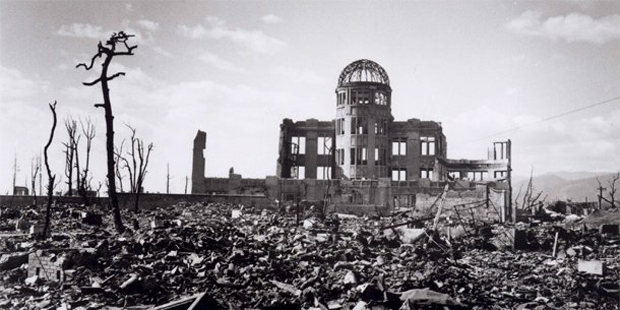The atomic bombings of Hiroshima and Nagasaki in Japan were two devastating events that occurred towards the end of World War II, resulting in unprecedented destruction and loss of life. Here’s a detailed description of both bombings:
Hiroshima:
On August 6, 1945, at 8:15 AM local time, the United States dropped an atomic bomb named “Little Boy” on the city of Hiroshima, Japan. The bomb was dropped from the American B-29 bomber aircraft, the Enola Gay. Hiroshima was chosen as a target due to its military significance and its relatively untouched status compared to other Japanese cities.
The explosion created a blinding flash of light, followed by a massive shockwave and a fireball that engulfed the city. Buildings were flattened, and thousands of people were instantly killed or fatally injured. The intense heat generated by the blast caused widespread fires, adding to the destruction.
The aftermath of the bombing was catastrophic. The immediate death toll was estimated to be around 70,000 to 80,000 people, with tens of thousands more succumbing to injuries and radiation sickness in the days, weeks, and years that followed. The city’s infrastructure was decimated, and survivors faced unimaginable suffering and hardship.
Nagasaki:
Three days after the bombing of Hiroshima, on August 9, 1945, the United States dropped a second atomic bomb, nicknamed “Fat Man,” on the city of Nagasaki. Like Hiroshima, Nagasaki was a significant industrial and military hub.
The explosion occurred at 11:02 AM local time, and while “Fat Man” was more powerful than “Little Boy,” Nagasaki’s hilly terrain limited the extent of the damage. Nonetheless, the devastation was still immense. The bomb flattened buildings, ignited fires, and caused widespread destruction.
The death toll in Nagasaki was slightly lower than in Hiroshima, with around 40,000 to 75,000 people killed immediately or in the aftermath of the bombing. Many more suffered from severe injuries, radiation poisoning, and long-term health effects.
Aftermath:
The atomic bombings of Hiroshima and Nagasaki led to Japan’s unconditional surrender to the Allied forces, effectively ending World War II. However, the bombings also raised profound ethical, moral, and humanitarian questions regarding the use of nuclear weapons and the indiscriminate targeting of civilian populations.
The long-term consequences of the bombings are still felt today, with survivors (known as Hibakusha) continuing to advocate for nuclear disarmament and peace. The bombings serve as a somber reminder of the horrors of war and the catastrophic impact of nuclear weapons on human lives and societies.
In conclusion, the atomic bombings of Hiroshima and Nagasaki represent dark chapters in human history, highlighting the destructive power of nuclear warfare and the need for global efforts to prevent such tragedies from recurring.






